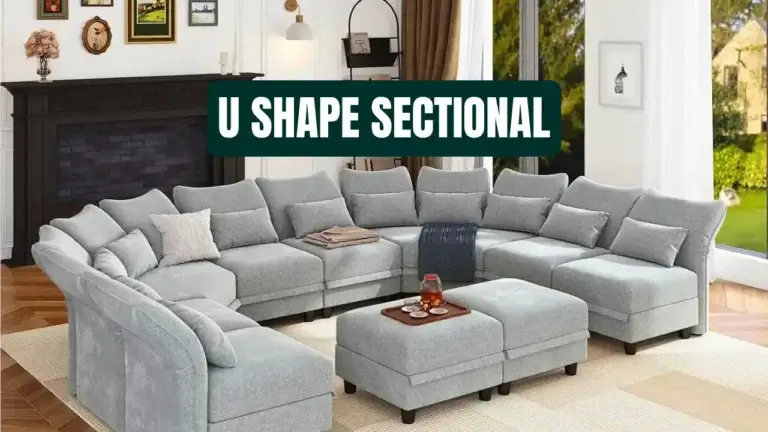Introduction
Budget-Friendly DIY Solutions + AI Tools are changing the game for makers, crafters, and weekend warriors everywhere. No longer do you need a big budget or a ton of experience to tackle creative projects, build smart home upgrades, or even start your own side hustle selling handcrafted items. With a mix of smart planning, upcycling tricks, and the power of AI-driven apps, you can design, build, and sell—all without draining your wallet.
Whether you’re into home decor, furniture flipping, digital crafts, or automating your daily life, this guide covers everything you need to get started. We’ll walk you through step-by-step, showing you how artificial intelligence can simplify even the trickiest projects while keeping your costs low. From planning and designing to measuring, building, and selling—these tools do more than just help; they make your DIY journey smarter, faster, and more fun.
So if you’ve been holding off on your next project because of time, cost, or fear of failure, it’s time to rethink everything. Let’s dive into how to master your craft on a budget—with a little help from AI.
Why Budget-Friendly DIY Matters More Than Ever
We’re living in a time when saving money isn’t just a goal—it’s a necessity. Whether you’re a student, a stay-at-home parent, or just someone trying to stretch every dollar, budget-friendly solutions are the way to go. DIY, or Do-It-Yourself, has become a popular and powerful approach for anyone looking to create, fix, build, or even redecorate without burning a hole in their wallet.
But here’s the kicker—traditional DIY, while money-saving, still demands time, skills, and sometimes a bit more know-how than we think. That’s where the fusion of old-school creativity and modern-day tech comes in. We’re talking about AI tools, folks.
Budget DIY isn’t just about buying cheap materials or using what’s lying around your garage anymore. It’s about getting smart—using digital tools to plan better, design faster, and execute cleaner. When done right, it’s the perfect combo of brain and brawn. You get the satisfaction of building something with your hands while relying on tech to streamline the process.
In this digital-first era, anyone can become a maker, a builder, or a creator. You just need the right tools, a bit of imagination, and a few hacks to make it work for your budget.
How AI Tools Are Changing the DIY Game
You’ve probably used AI tools without even realizing it—whether it’s a shopping assistant recommending the cheapest drill online or an app that helps you measure your living room for a new bookshelf. AI is no longer reserved for big tech firms or Silicon Valley nerds—it’s in your phone, your browser, and yes, your toolbox (figuratively speaking).
AI tools today are capable of helping you:
- Plan projects with high efficiency
- Create designs without graphic skills
- Shop smarter by comparing prices instantly
- Learn new techniques via tutorials tailored to your needs
- Avoid costly mistakes through simulations and digital previews
Imagine telling your smart assistant, “Show me how to build a floating shelf,” and instantly getting a list of YouTube videos, material lists, and even a 3D render of what it will look like in your space. That’s where we are right now. Whether you’re crafting wall art, repurposing furniture, or building a budget smart home, AI is your co-pilot.
So, if you’ve ever felt overwhelmed by a DIY project, or you’ve held back because of costs or lack of skills, this guide is for you. Let’s dive into how you can harness the power of AI to make your DIY journey smoother, smarter, and way more affordable.
Planning Your DIY Project with AI

AI Tools for Brainstorming Creative Ideas
Every great DIY project starts with a burst of inspiration—but sometimes, that spark just doesn’t come. That’s where AI-based brainstorming tools come into play. Tools like ChatGPT, Notion AI, and Jasper can help you generate project ideas based on your budget, skill level, available tools, and materials. Just type in a simple prompt like “DIY decor ideas under $20” and you’ll be swimming in suggestions in seconds.
Platforms like Pinterest and Canva now use AI to recommend personalized ideas based on your browsing history or interests. AI doesn’t just show you random ideas; it learns from your preferences and continuously refines your feed to show projects that actually suit your taste and resources.
Want to get even more specific? There are niche platforms like HomeStyler or Planner 5D that let you play around with virtual room layouts, furniture placements, and decor elements, giving you a real sense of space before you lift a hammer.
Let’s say you’re planning to redecorate your home office. An AI design tool can create a layout plan, suggest color palettes, and even help you visualize the final look. All this without needing to hire a professional designer. That’s both empowering and budget-friendly.
Budgeting Made Easy with Smart Finance Apps
Alright, you’ve got your idea—now let’s talk money. No matter how creative you get, DIY projects can quickly get out of hand if you don’t track your expenses. Thankfully, AI-driven budgeting apps like Mint, YNAB (You Need A Budget), and PocketGuard make it super easy to stay on track.
These apps analyze your spending habits, set limits for your DIY projects, and even send alerts when you’re about to overspend. You can set goals like “Redesign bedroom under $100” and see in real time how close you are to your limit.
Even more impressive are apps like Fintual or Cleo that use AI to give personalized saving tips. Say you’re $20 over budget; the app might suggest a cheaper alternative material or a coupon code to bring your cost back down.
When you combine this budgeting tech with a little creative reuse of items around your house—like using leftover wood or repurposing old jars—you’re not just saving money, you’re being sustainable, too.
And the best part? Most of these AI tools come with free versions or trials, so you don’t have to spend money to start saving money.
Finding Materials Without Breaking the Bank
Where to Source Affordable Supplies
The materials you choose can make or break your project budget. You could have the smartest plan in the world, but if your materials are pricey, it won’t matter. So where do savvy DIYers get their stuff? The answer lies in a mix of thrifting, smart shopping, and AI assistance.
Start with your local thrift stores, garage sales, and Facebook Marketplace. These are goldmines for cheap or even free supplies—wood, fabric, jars, furniture, tools—you name it. People often give away items that are perfect for upcycling or repurposing.
Then there are stores like Habitat for Humanity ReStore or salvage yards that sell leftover construction materials at a fraction of the price. You can find top-tier stuff here without paying top dollar.
Here’s the pro move: combine these with online AI tools to track availability, compare deals, and get alerts when prices drop. More on that below.
AI-Powered Shopping Assistants and Price Comparison Tools
AI shopping assistants are the real MVPs when it comes to finding the best deals. Tools like Honey, Capital One Shopping, and PriceGrabber scan hundreds of retailers and automatically apply coupon codes or cashback offers when you’re ready to checkout.
Let’s say you’re buying a power drill online. Instead of manually checking five different websites, AI tools do that for you, in seconds. They’ll tell you if it’s cheaper on eBay, Amazon, or Walmart—and sometimes even show you refurbished options to cut costs further.
Some even go a step further: Karma and OctoShop can notify you when items go on sale or when new stock is added in your area.
These AI tools aren’t just saving you money—they’re saving time, effort, and the stress of second-guessing every purchase.
Designing Like a Pro on a Shoestring Budget
Free & Affordable AI Design Tools
Ever looked at someone’s DIY project and thought, “There’s no way I could design something that good”? Well, think again. With today’s AI-powered design tools, even total beginners can create stunning layouts, graphics, and visual mockups without any design background—and without spending a dime.
Tools like Canva, Visme, and Fotor come with tons of free templates, drag-and-drop functionality, and AI-powered suggestions that help you get professional-looking results. Canva’s AI “Magic Design” feature, for example, can generate custom templates for anything from wall art to home labels based on just a few keywords.
Looking for something more room-specific? Tools like Planner 5D or Homestyler let you design entire rooms in 3D, allowing you to visualize how different colors, furniture, and decorations would look before you even buy or build anything.
Need to create a quick logo for your DIY brand or label your handmade crafts? AI-powered branding platforms like Looka or Hatchful by Shopify allow you to generate logos and branding kits for free or at minimal cost.
Here’s what makes these tools incredibly budget-friendly:
- No need to hire a designer
- No expensive software licenses
- No steep learning curves
Just plug in your ideas, let the AI give you some direction, and tweak it to your liking. You don’t have to be a creative genius—just know what you like, and let the tech do the heavy lifting.
Using Templates and Mockups Effectively
Templates are like cheat codes for DIY projects. Whether you’re printing labels, creating wall art, designing your planner, or crafting a t-shirt, templates save you hours of design work—and most of them are free or cost next to nothing.
Sites like Creative Market, Envato Elements, and even Etsy offer digital downloads that include editable templates for almost any project you can think of. Many of these can be customized in Canva or Adobe Express, both of which have AI-powered editing and design suggestions to help you adjust colors, fonts, and layouts effortlessly.
Want to see how your project will look before printing or building it? Use mockup generators. Tools like Smartmockups or MockupWorld let you drop your design onto a virtual product—be it a mug, poster, t-shirt, or tote bag—and see a realistic preview instantly. It’s perfect for testing out ideas before you commit.
This is especially helpful if you’re planning to sell your DIY crafts online. Showcasing your product in a realistic setting (without paying for a photoshoot) makes a massive difference—and AI helps you do that in minutes.
Bottom line: templates and mockups are time-saving, cost-cutting, and result-boosting tools every budget DIYer should have in their toolkit.
Building and Crafting Smarter
DIY Project Apps That Guide You Step-by-Step
So, you’ve got your materials, and you’ve nailed the design—now comes the hands-on part. If you’re worried about getting it wrong, you’re not alone. But the good news? There are AI-driven apps that act like a virtual coach, walking you through each step with precision.
Take Instructables or DIYZ, for example. These platforms offer detailed, step-by-step project guides for everything from woodworking to electronics. The real kicker? Some now incorporate AI that tailors the instructions based on your skill level and available tools.
Need a custom guide for building a planter box with just a hammer and nails? AI can generate that for you. Many of these platforms allow you to input what tools and materials you have, and then they create a plan that fits your resources.
Apps like Houzz and IKEA Place use augmented reality (AR) combined with AI to show how your finished product will look in your actual space. That’s incredibly helpful for anything related to furniture, wall decor, or room renovations.
There are even AI-powered learning tools like Tinkercad (great for electronics or 3D modeling) that provide simulation environments—so you can “build” your project virtually first and avoid costly mistakes in real life.
In a nutshell, these tools:
- Help avoid costly trial and error
- Save time by personalizing instructions
- Reduce stress by breaking big projects into simple, achievable steps
And the best part? Many of these apps are completely free or offer robust free versions.
AI-Driven Measurement and Layout Tools
Measurements are the backbone of any DIY project. Get one wrong, and the whole thing could fall apart—literally. But guess what? You don’t need to break out the tape measure and protractor every time anymore.
AI has made measuring, planning layouts, and even estimating cuts incredibly easy. Magicplan, for instance, uses your phone’s camera to scan a room and generate precise floor plans with measurements. You can then use these plans to figure out how much material you’ll need, where things will go, and whether your design idea will actually fit.
Apps like CamToPlan and Measure by Google use AR and AI to turn your phone into a digital measuring tape. Just point and scan, and the app gives you accurate length, width, and height values. Some even allow you to export your measurements into CAD files for more advanced planning.
Want to know how many wood planks you’ll need or how to cut them with the least waste? CutList Optimizer is an AI-based tool that does exactly that. Input your materials and dimensions, and it creates an optimal cut list to maximize usage and minimize scrap.
With these tools, you’re not just making things—you’re engineering them with precision. And you’re doing it on a budget, without having to buy professional measuring tools or hire an expert.
Smart Home DIY Projects with AI Integration
Affordable Smart Home Gadgets and How to Use Them
You don’t need to drop thousands of dollars to have a smart home that feels straight out of a sci-fi movie. With a few budget-friendly devices and a little DIY spirit, you can automate, optimize, and upgrade your living space without the premium price tag.
Start with the basics. Gadgets like smart plugs, smart bulbs, and Wi-Fi light switches are incredibly affordable now. For as little as $10-20, you can control lighting, appliances, or even your coffee machine using your phone or voice assistant.
Devices like Amazon Echo Dot, Google Nest Mini, or Samsung SmartThings Hub act as the control center for your smart home, and guess what? You can set most of them up yourself in under 30 minutes—no electrician needed.
Here are a few smart home DIY ideas that won’t break the bank:
- Automate your lights: Use motion sensors and smart bulbs to create ambient lighting that follows you from room to room.
- Secure your home: Install DIY smart cameras or video doorbells like Wyze Cam or Blink, which offer top-tier features at a fraction of the cost.
- Control energy use: Smart thermostats and plugs help reduce electricity bills by scheduling usage and optimizing power consumption.
AI comes into play by learning your habits. Your thermostat adjusts to your routine, your lights dim automatically when the sun sets, and your speakers play your morning playlist without being asked. These aren’t just gimmicks—they’re time-savers, money-savers, and game-changers.
You don’t need to be a tech genius. Most of these gadgets come with guided setup apps, and many include DIY mounting kits. With a little planning and under $100, you could automate multiple parts of your home.
DIY Automation Projects Using AI Assistants (Alexa, Google)
Voice assistants aren’t just for setting timers or checking the weather. With some creativity and DIY know-how, they become powerful tools for automating your home environment. And the best part? It’s easier than you think.
Let’s start with routines—custom sequences that trigger multiple actions with one command. Want to create a “Good Morning” routine? Your AI assistant can turn on the lights, read the news, play music, and even start your coffee—all with a single “Good Morning” command.
Here are a few clever DIY automation ideas using AI assistants:
- “Movie Night” Mode: Dim the lights, close the smart blinds, and start your Netflix show automatically.
- Voice-Controlled Workshop: Turn your garage lights and workbench fan on and off while your hands are full.
- Bedtime Automation: Lock the doors, shut off all lights, and activate the alarm system by saying “Good night.”
Platforms like IFTTT (If This Then That) and Zapier take it even further by allowing you to create custom automation across apps and devices. No coding needed—just set your triggers and actions. Want your smart lamp to blink when you get an important email? Done. Want to log all your voice assistant commands into Google Sheets? You can do that, too.
This is where DIY meets smart living. With some basic hardware and a creative mindset, you can build a personalized smart environment that reacts to you—and it costs way less than hiring a home automation company.
Repurposing and Upcycling with AI Help
AI Tools to Visualize Upcycled Projects
Upcycling is one of the most budget-friendly and eco-friendly DIY trends out there—and AI is here to make it even more creative and practical. The idea is simple: take something old, unused, or headed for the trash, and give it a new life. But imagining what it could become is often the hardest part.
That’s where AI visualization tools come in. Platforms like Remodel AI, Houzz, and even Pinterest’s AI-based search help you visualize potential transformations. Take a photo of that old dresser, and these tools can suggest how it might look painted, restructured, or repurposed.
Apps like Designify or PhotoRoom allow you to remove backgrounds, experiment with colors, or apply filters that make your ideas pop. You can turn a drab, grainy photo into a realistic concept design that helps you plan your project better—and share your ideas with others for feedback.
Want to transform old doors into a rustic coffee table or turn mason jars into pendant lights? Input a few keywords into an AI generator like ChatGPT, and you’ll get step-by-step ideas tailored to the materials you have.
AI doesn’t just provide ideas—it helps you see the end result before you even begin. That visual confidence can be the push you need to start that upcycling project you’ve been putting off.
Low-Cost Transformations Using Reclaimed Materials
Let’s talk materials. If you’re truly looking to DIY on a dime, reclaimed items are your best friend. Pallets, old doors, windows, crates, tires, and fabric scraps can all be transformed into something unique and useful.
But what makes it even more interesting is using AI to research and guide these transformations.
For instance, tools like Google Lens can scan a random object—like an old chair or shelf—and show you similar upcycling ideas from around the web. Want to see how others have turned crates into bookshelves or wine racks? Just snap a pic, and you’re loaded with inspiration.
You can also use Craigslist, Freecycle, or Facebook Marketplace (with AI-powered search filters) to find free or nearly-free building materials near you. Many people give away leftover wood, fabric, or furniture just to avoid hauling it to the dump.
The magic lies in turning these scraps into something purposeful:
- Wood pallets → Garden planters or rustic headboards
- Old ladders → Bookshelves or towel racks
- Torn jeans → Cushion covers or storage bins
By combining AI tools for planning and visualization with a little elbow grease, you’re not just saving money—you’re turning trash into treasure. And honestly? That’s the heart of creative, budget-friendly DIY.
Selling Your DIY Creations Online
AI-Powered E-Commerce Tools for DIY Sellers
You’ve poured your time, creativity, and love into your DIY projects—why not make a little extra income from them? Selling your creations online doesn’t have to be overwhelming, especially when AI tools can help you every step of the way.
Starting an online shop used to be a huge undertaking. But now, platforms like Etsy, Shopify, and Facebook Marketplace offer beginner-friendly interfaces. Combine them with AI tools, and you’ve got yourself a small business on a budget.
Here’s how AI simplifies selling your DIY crafts:
- Product Descriptions: Tools like Jasper and copy.ai help you write compelling product descriptions that highlight features, materials, and use cases—all with just a few clicks.
- SEO Optimization: Use AI-based platforms like Surfer SEO or Ubersuggest to research keywords and ensure your listings show up in search results.
- Product Photography Enhancements: Don’t own a fancy camera? AI apps like Remove.bg and PhotoRoom clean up backgrounds and enhance lighting so your products shine.
You can even automate your customer service using AI-powered chatbots like Tidio or Zendesk AI, which answer FAQs, track orders, and even recommend other products to buyers.
What’s more, platforms like Shopify Magic or Etsy’s Listing Helper offer built-in AI suggestions to improve your shop’s performance and boost your visibility.
So whether you’re selling hand-painted signs, custom furniture, or homemade candles, AI takes the guesswork out of growing your brand—and helps you focus on what you love: creating.
Marketing DIY Products with AI Assistance
Marketing doesn’t have to be a full-time job. With AI tools, promoting your handmade creations becomes simple, smart, and often automatic. No need to hire an expensive marketing agency—just plug in the right tools, and let the bots boost your business.
Start with social media content. Tools like Lumen5, Canva’s Magic Write, and Pictory turn your photos or product videos into engaging content for Instagram, Pinterest, and TikTok. These platforms know what kind of posts perform best—and they tailor your content accordingly.
Then there’s email marketing. AI-driven platforms like Mailchimp and Moosend create personalized email sequences based on customer behavior. Someone bought your macrame wall hanging? Send them a follow-up email suggesting a matching shelf or planter.
Here’s what AI can do for your DIY brand’s marketing:
- Generate blog content to share your process and connect with customers
- Create automated ads on Facebook and Google that target ideal shoppers
- Analyze customer feedback and recommend changes to improve your product or website
And don’t forget about analytics. With AI tools, you can see which products get the most attention, where your traffic is coming from, and what keywords are driving sales—all of which help you scale smarter, not harder.
DIYing for profit used to mean juggling a dozen roles. Now, with AI, you get a whole team of digital helpers for free or cheap.
Conclusion: Embrace the AI-Powered DIY Revolution
DIY has always been about creativity, resourcefulness, and doing more with less. But now, with AI tools in your corner, you’re not just making things—you’re leveling up. From planning and designing to building, marketing, and even selling, artificial intelligence offers budget-friendly solutions at every step.
What used to take hours of guesswork can now be done in minutes. What required professional help can now be tackled with a smartphone and an app. And the best part? You don’t have to sacrifice quality or creativity. In fact, you’ll probably discover a whole new level of both.
So whether you’re just getting started or looking to take your DIY game to new heights, now’s the time to dive into the world of AI-powered crafting. It’s smart, it’s savvy, and it’s absolutely within reach—no matter your budget.
FAQs
1. What is the best free AI tool for beginners in DIY?
Canva is one of the most user-friendly AI design tools for beginners. It offers drag-and-drop templates, AI-generated suggestions, and features like Magic Design to help you create graphics, labels, and decor without needing a design background.
2. Can I use AI to help with woodworking or crafting projects?
Absolutely! Tools like Instructables and DIYZ offer AI-personalized project guides, while measurement apps like Magicplan help you plan and build accurately. AI can also generate cut lists, step-by-step guides, and safety checklists tailored to your tools and skill level.
3. How can AI help me sell my DIY products online?
AI can generate product descriptions, optimize listings for SEO, automate customer service, and even create marketing content for social media. Platforms like Shopify and Etsy integrate AI to make launching and growing your online shop easier and more effective.
4. What are some AI tools for visualizing DIY home upgrades?
Apps like Houzz, Planner 5D, and IKEA Place use AI and AR to help you see how furniture, colors, or layouts will look in your home before you commit. They’re great for planning renovations or rearranging a room without spending any money upfront.
5. Is AI really budget-friendly for DIYers?
Yes! Many AI tools offer robust free versions, and even premium features are often far cheaper than hiring a pro. AI can save you time, reduce errors, and help you make the most of what you already have—making it perfect for DIYers on a budget.

My name is Mahi Uddin, and I’m a blog writer with over two years of experience specializing in creating engaging, informative content using AI tools. I contribute to InExDecor.com, where I share creative ideas and practical tips for transforming interior and exterior spaces into beautiful, functional environments. With a passion for storytelling and a knack for blending creativity with technology, I strive to craft blogs that not only inform but also inspire readers. When I’m not writing, you can find me exploring design trends or enjoying a good book with a cup of coffee.








